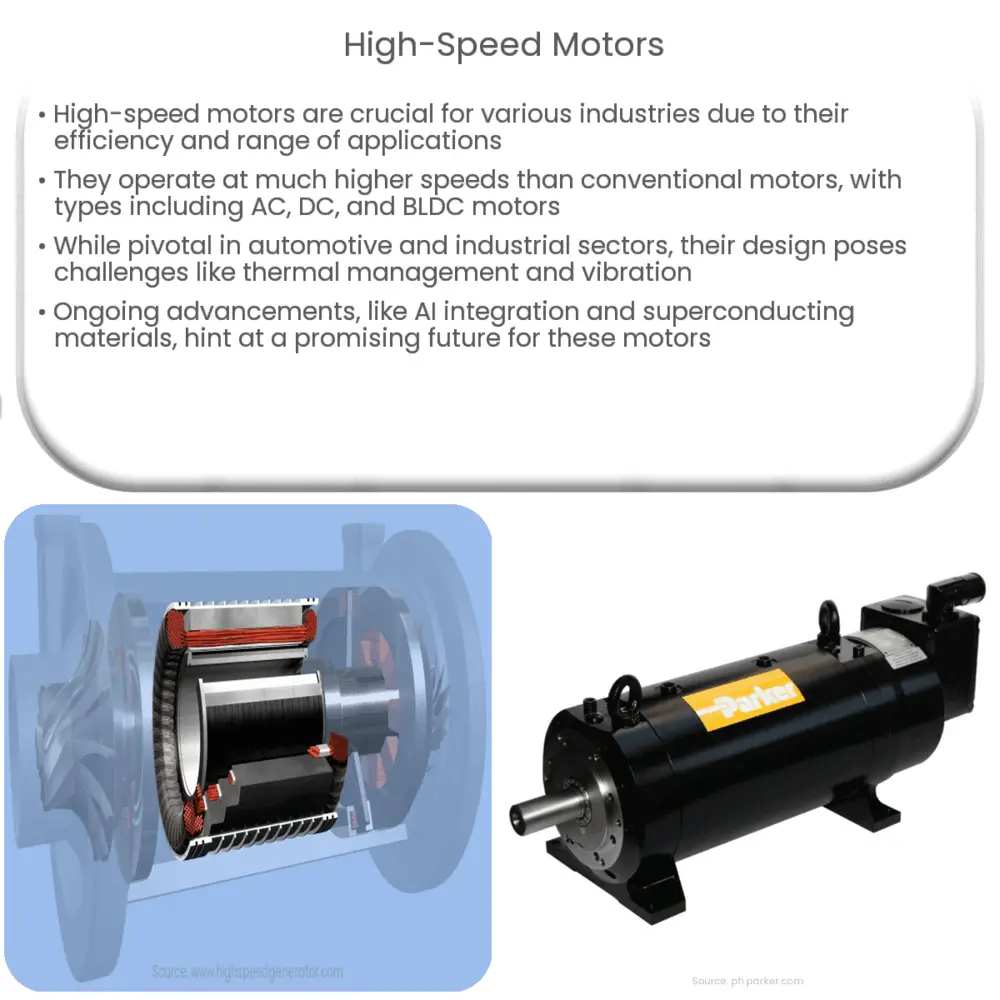Explore the world of high-speed motors: their types, applications, challenges, and future prospects in our in-depth article.

Introduction to High-Speed Motors
High-speed motors represent a pivotal element in the technological advancement of industries globally. Their use and importance have drastically increased in recent years, serving as the backbone of several applications, ranging from high-velocity manufacturing processes to precision equipment like CNC machines.
Understanding High-Speed Motors
At a fundamental level, a high-speed motor is an electric motor that operates at a speed significantly higher than the typical 1,500 to 1,800 rotations per minute (rpm) of conventional motors. These motors can run at speeds up to 100,000 rpm or even more, providing impressive power and efficiency.
Types of High-Speed Motors
- AC Motors: This type is further divided into Induction and Synchronous motors. Induction motors are primarily used due to their robustness and affordability. In contrast, Synchronous motors are less common but provide superior performance in terms of efficiency and power factor.
- DC Motors: Known for their simplicity and controllability, DC motors were the go-to choice for many years. However, with advancements in power electronics, the use of DC motors is gradually diminishing.
- BLDC Motors: Brushless DC motors combine the best of both worlds – the simplicity of DC motors and the power efficiency of AC motors. Due to their brushless design, these motors tend to have a longer lifespan and require less maintenance.
Applications of High-Speed Motors
- Automotive Applications: In the automotive industry, high-speed motors are widely utilized in electric vehicles for propelling and auxiliary purposes. Their high efficiency contributes to the overall performance and range of the vehicle.
- Industrial Automation: High-speed motors are integral to numerous manufacturing processes that require precision and speed. They find widespread use in CNC machines, robotic arms, and conveyor systems.
- Home Appliances: From blenders to vacuum cleaners, high-speed motors are a core component of various household appliances. Their compact size and power efficiency make them an ideal choice for such applications.
The high-speed motors’ rapid evolution is transforming industries by facilitating seamless operations. However, they are not without their unique set of challenges, which must be overcome to maximize their potential.
Challenges in High-Speed Motor Design
Designing and implementing high-speed motors pose several challenges. Some of the notable ones include:
- Thermal Management: High-speed motors generate significant amounts of heat. Therefore, effective thermal management strategies are crucial to ensure motor longevity and prevent damage due to overheating.
- Vibration and Noise: At high rotational speeds, motors tend to produce considerable vibration and noise. This requires the use of advanced balancing techniques and noise reduction measures.
- Bearing Selection: The bearings used in high-speed motors must endure high stress due to high rotational speeds. Therefore, bearing selection and its material play a significant role in determining the life of a high-speed motor.
Overcoming Challenges
Modern engineering solutions are striving to address these challenges effectively. The use of advanced materials, innovative cooling techniques, precision engineering, and high-performance bearings are some approaches used to enhance the performance and durability of high-speed motors. Further, sophisticated control algorithms can help manage the motor’s operation, improving efficiency and reducing wear and tear.
Future of High-Speed Motors
The future of high-speed motors is promising, particularly with the rising focus on energy efficiency and electric propulsion. Emerging trends such as the integration of AI for predictive maintenance, the development of superconducting materials, and the use of additive manufacturing techniques are expected to push the boundaries of what’s possible with high-speed motors. Furthermore, as advancements in power electronics continue, the performance, efficiency, and range of applications of these motors are set to increase.
Conclusion
High-speed motors have revolutionized numerous industries with their performance and efficiency. Despite the challenges involved in their design and operation, continuous technological advancements are set to drive their future growth and applicability. As we look forward, high-speed motors will continue to play an increasingly significant role in shaping a sustainable and efficient future.



